Intro
Discover 5 ways to identify keloid scars, including symptoms, causes, and removal treatments, to effectively manage and prevent keloid formation, promoting healthy skin and scar care.
Keloid scars are a type of raised scar that can appear after an injury to the skin, such as a cut, burn, or surgical incision. They are more common in certain areas of the body, like the ears, chest, back, and shoulders. Understanding keloid scars is essential for effective treatment and prevention. In this article, we will delve into the world of keloid scars, exploring their characteristics, causes, symptoms, and treatment options.
Keloid scars can be unsightly and may cause discomfort, itching, or pain. They can also lead to emotional distress, affecting a person's self-esteem and confidence. Therefore, it is crucial to recognize the signs and symptoms of keloid scars to seek medical attention promptly. Early diagnosis and treatment can help reduce the appearance of keloid scars and prevent further complications.
Keloid scars are different from regular scars in that they extend beyond the original wound site, forming a raised, thickened area of skin. They can be red, pink, or purple and may be itchy or painful. In some cases, keloid scars can become quite large, making them more noticeable and potentially causing more discomfort. By understanding the characteristics of keloid scars, individuals can take steps to prevent their formation and seek treatment if they do occur.
Characteristics of Keloid Scars
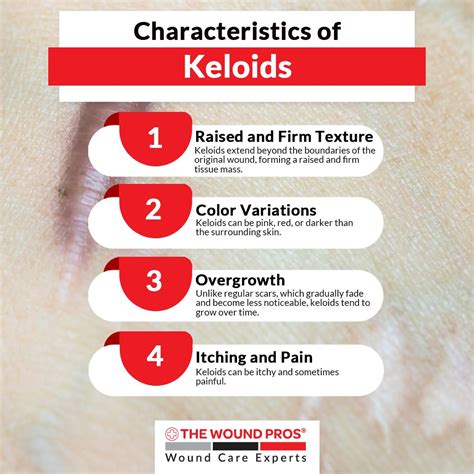
Causes of Keloid Scars
Keloid scars are caused by an overproduction of collagen, a protein that helps to heal wounds. When the skin is injured, the body produces collagen to repair the damaged tissue. In some cases, the body may produce too much collagen, leading to the formation of a keloid scar. Keloid scars can also be caused by genetic factors, hormonal changes, or certain medical conditions. Understanding the causes of keloid scars can help individuals take steps to prevent their formation and seek treatment if they do occur.Treatment Options for Keloid Scars
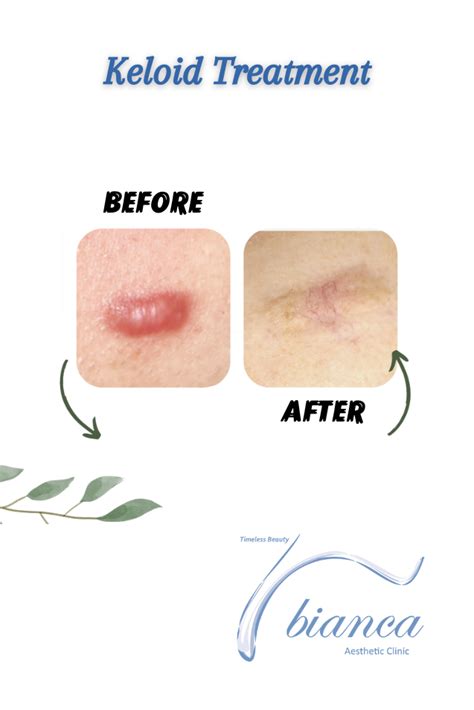
Prevention of Keloid Scars
Preventing keloid scars is often easier than treating them. There are several steps individuals can take to reduce their risk of developing keloid scars. Keeping wounds clean and covered, avoiding picking at scabs, and using silicone gel or sheeting can help to prevent keloid scars. Additionally, individuals can use topical creams or ointments to help reduce the appearance of scars. By taking these steps, individuals can reduce their risk of developing keloid scars and promote healthy skin.Risk Factors for Keloid Scars
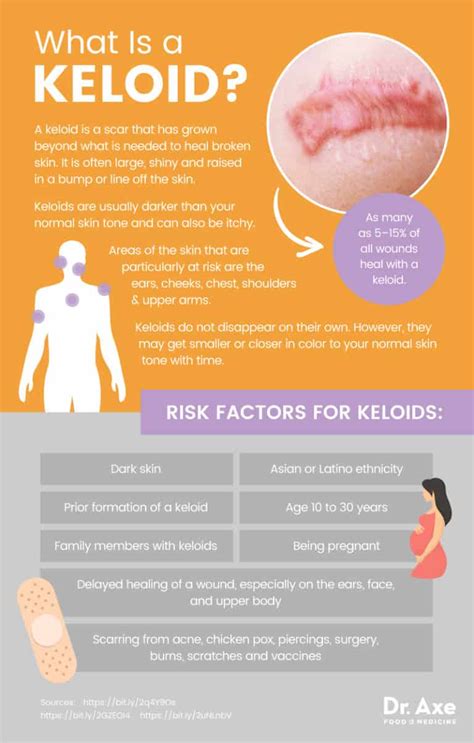
Symptoms of Keloid Scars
Keloid scars can cause a range of symptoms, including itching, pain, and discomfort. They can also lead to emotional distress, affecting a person's self-esteem and confidence. In some cases, keloid scars can become infected, leading to further complications. By recognizing the symptoms of keloid scars, individuals can seek medical attention promptly and receive effective treatment.Diagnosis of Keloid Scars
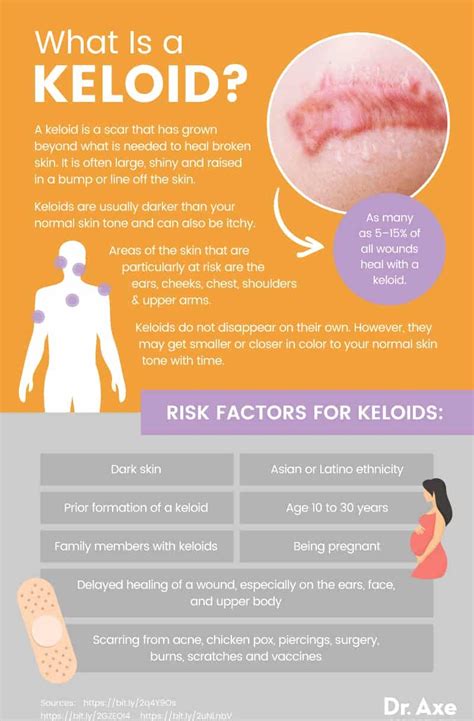
Treatment Outcomes for Keloid Scars
The outcome of treatment for keloid scars depends on various factors, including the size and location of the scar, as well as the individual's overall health. In general, treatment can help to reduce the appearance of keloid scars, alleviate symptoms, and prevent further complications. However, it is essential to have realistic expectations and understand that treatment may not completely eliminate the scar. By understanding the potential outcomes of treatment, individuals can make informed decisions about their care.Complications of Keloid Scars
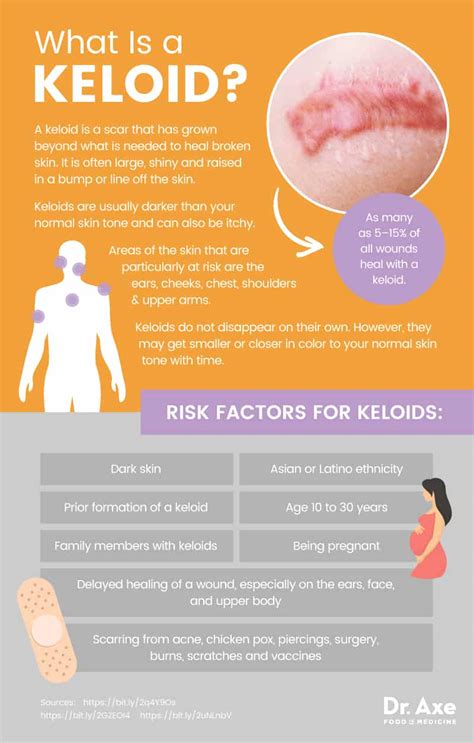
Emotional Impact of Keloid Scars
Keloid scars can have a significant emotional impact on individuals, affecting their self-esteem and confidence. They can also lead to feelings of embarrassment, anxiety, and depression. By understanding the emotional impact of keloid scars, individuals can seek support and guidance from healthcare professionals, friends, and family members.Support and Resources for Keloid Scars
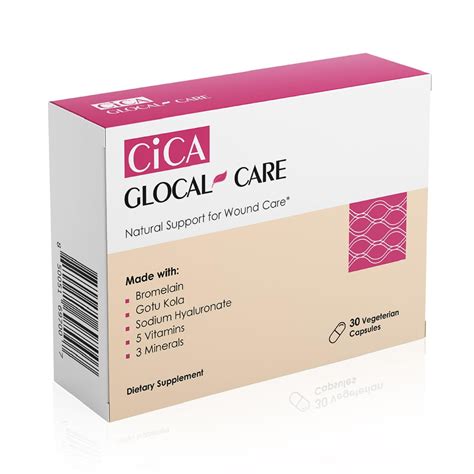
Future Directions for Keloid Scars
Research is ongoing to develop new and effective treatments for keloid scars. Future directions may include the use of advanced technologies, such as laser therapy, and novel therapeutic agents, such as topical creams and injections. By staying informed about the latest developments and advancements, individuals can make informed decisions about their care and seek the most effective treatment options available.What are keloid scars?
+Keloid scars are a type of raised scar that can appear after an injury to the skin, such as a cut, burn, or surgical incision.
What causes keloid scars?
+Keloid scars are caused by an overproduction of collagen, a protein that helps to heal wounds. Genetic factors, hormonal changes, and certain medical conditions can also contribute to their formation.
How are keloid scars treated?
+Treatment options for keloid scars include topical creams, injections, and surgical removal. The most effective treatment will depend on the individual's specific needs and circumstances.
Can keloid scars be prevented?
+Yes, keloid scars can be prevented by keeping wounds clean and covered, avoiding picking at scabs, and using silicone gel or sheeting. Topical creams or ointments can also help to reduce the appearance of scars.
What are the complications of keloid scars?
+Keloid scars can lead to various complications, including infection, scarring, and emotional distress. They can also affect a person's self-esteem and confidence, leading to feelings of embarrassment, anxiety, and depression.
In
Final Thoughts

